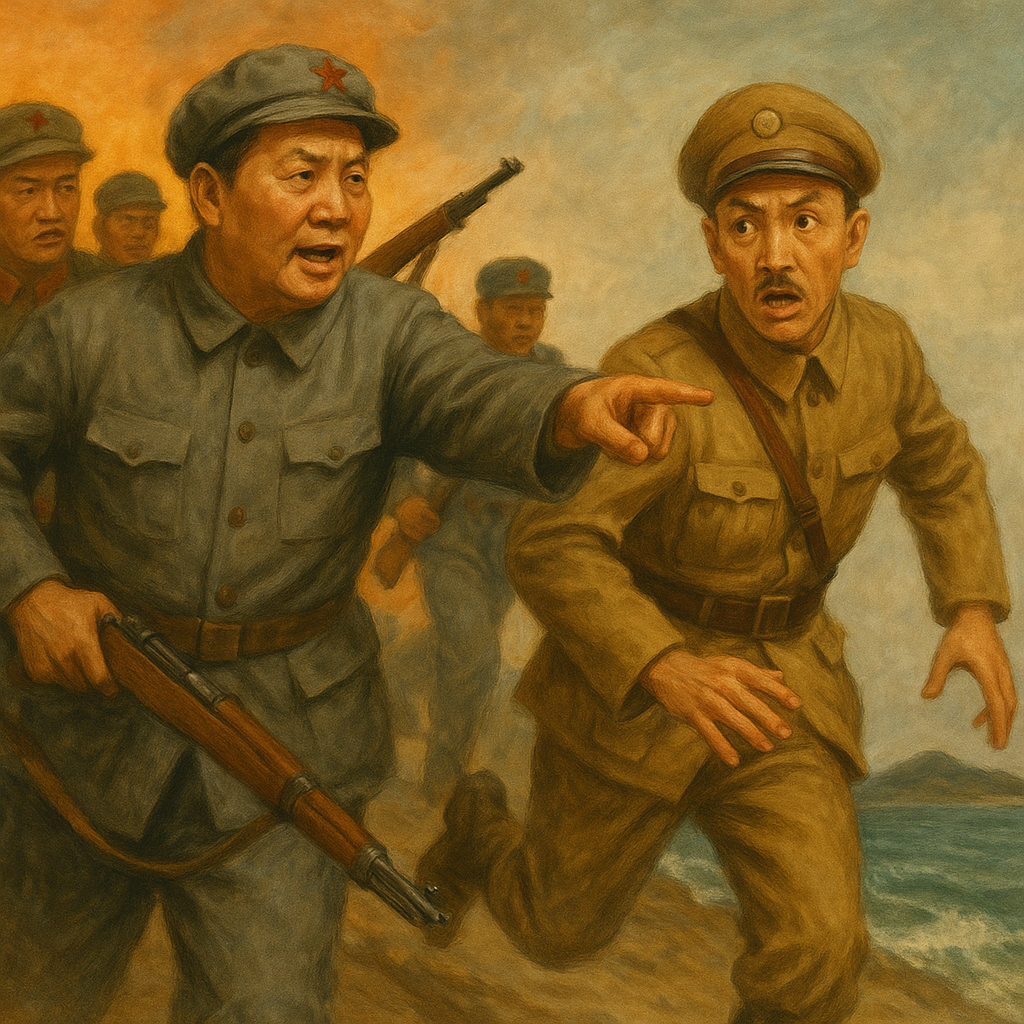Lesson 2: Cold War Conflicts (The Cold War Years)
Communism in China
Civil War and Mao Zedong
After WWII, China had a civil war between the Nationalists and the Communists. The Communists, led by Mao Zedong, won in 1949. China became a communist country.
🏃 Story: As Mao’s army grew stronger, the Nationalist leader Chiang Kai-shek and his supporters escaped to the island of Taiwan. Today, Taiwan is still not controlled by China.
The Great Leap Forward (1958–1962)
Mao wanted China to become rich and powerful fast. He started the Great Leap Forward, where people worked in farms and factories together. But it failed—many people had no food, and millions died.
🥄 Fact: In some villages, people made fake meals with mud and leaves to try to feel full.
The Cultural Revolution (1966–1976)
Mao started the Cultural Revolution to keep control. He used young people called the Red Guards to attack teachers, books, and anyone seen as “old” or “capitalist.”
📚 Story: A girl wrote that she told the Red Guards her own teacher was “against Mao”—and later cried for weeks when she realized her teacher had disappeared.
The Korean War
Fighting Begins (1950)
After WWII, Korea was split into North Korea (communist) and South Korea (non-communist). In 1950, North Korea attacked South Korea. The United Nations, led by the U.S., helped South Korea.
The War Continues
China helped North Korea. The war went back and forth. Many people died, and cities were destroyed.
After the War
In 1953, the war ended with no winner. Korea stayed divided at the 38th parallel, just like before.
🧱 Today: North Korea and South Korea are still divided by a Demilitarized Zone (DMZ)—one of the most dangerous borders in the world.
War in Vietnam
Domino Theory
The U.S. believed that if Vietnam became communist, other countries would “fall like dominoes.” So, they supported South Vietnam against the communist North.
A Divided Country
North Vietnam was led by Ho Chi Minh, a popular communist leader. The U.S. sent thousands of troops to fight in the jungles. The war was long and hard.
🌳 Story: U.S. soldiers said the jungle was so thick that they couldn’t see the sun. They also faced surprise attacks from tunnels underground.
Vietnam After the War
The U.S. left in 1973. In 1975, North Vietnam took over all of Vietnam. It became a communist country.
🌍 Cold War Flares in the Third World
Cuba's Communist Revolution
In 1959, Fidel Castro led a revolution in Cuba and made the island communist. The U.S. tried to stop him with the failed Bay of Pigs invasion.
🚬 Story: Castro was famous for his long speeches and his love of cigars.
Revolution in Nicaragua
In the 1980s, communists called Sandinistas took power in Nicaragua. The U.S. supported a group called the Contras to fight against them.
💰 Fact: This became the Iran-Contra scandal—a secret plan where the U.S. sold weapons to Iran and sent the money to the Contras.
Egypt Changes Alliances
At first, Egypt was friendly with the Soviet Union. Later, President Sadat made peace with Israel and became closer to the U.S.
✈️ Story: President Sadat visited Israel in 1977. People were shocked—it was the first time an Arab leader did that!
Soviet Invasion of Afghanistan
In 1979, the Soviet Union invaded Afghanistan. The U.S. helped the Mujahideen fighters with weapons. It became the “Soviet Union’s Vietnam”—a long, hard war that they couldn’t win.
🐎 Story: Mujahideen fighters rode horses into battle and used simple weapons to fight against tanks.
🌍 Changes in Africa
Many African countries gained independence in the 1960s. Some chose communism; others chose capitalism. The U.S. and Soviet Union both tried to influence them.
🏅 Story: In some countries, Cold War money helped pay for schools, roads, or sports. Athletes trained with Soviet coaches and went on to win medals.
